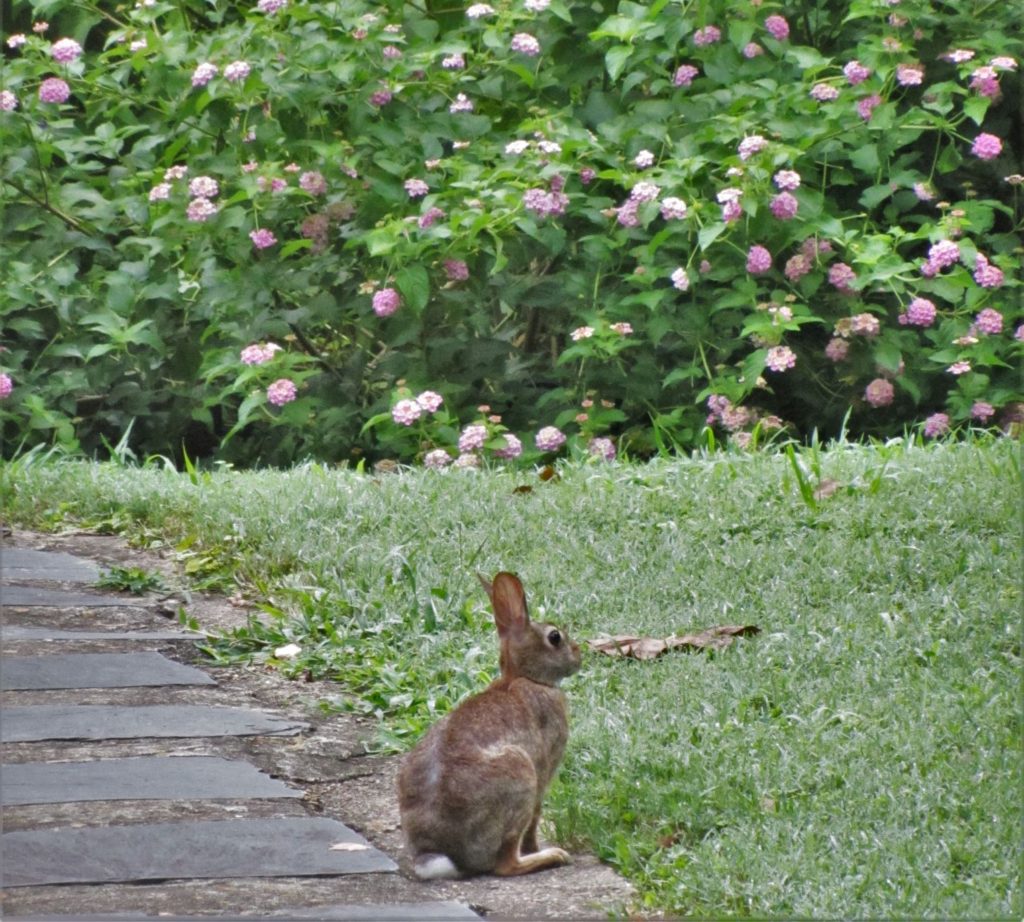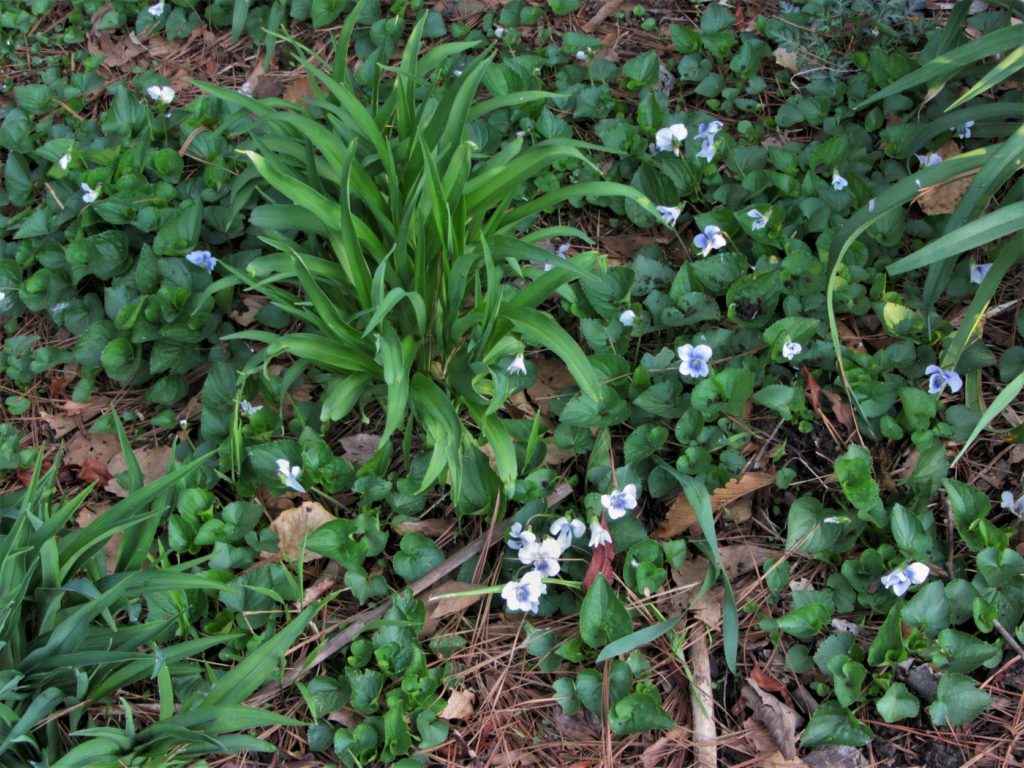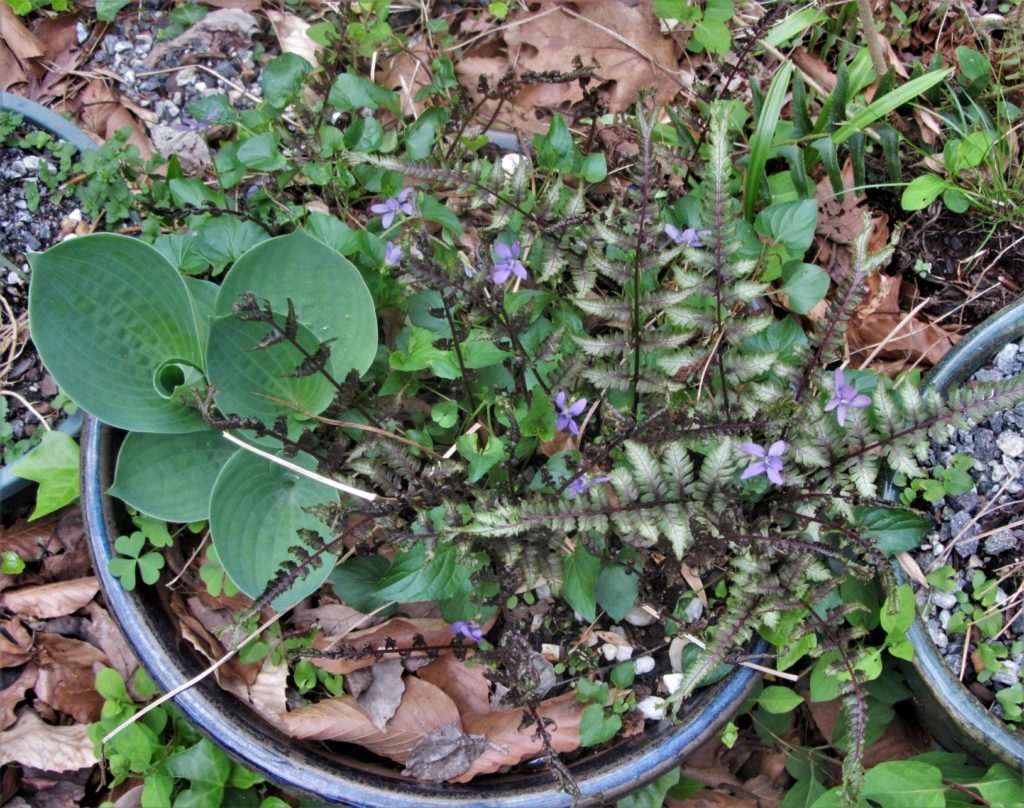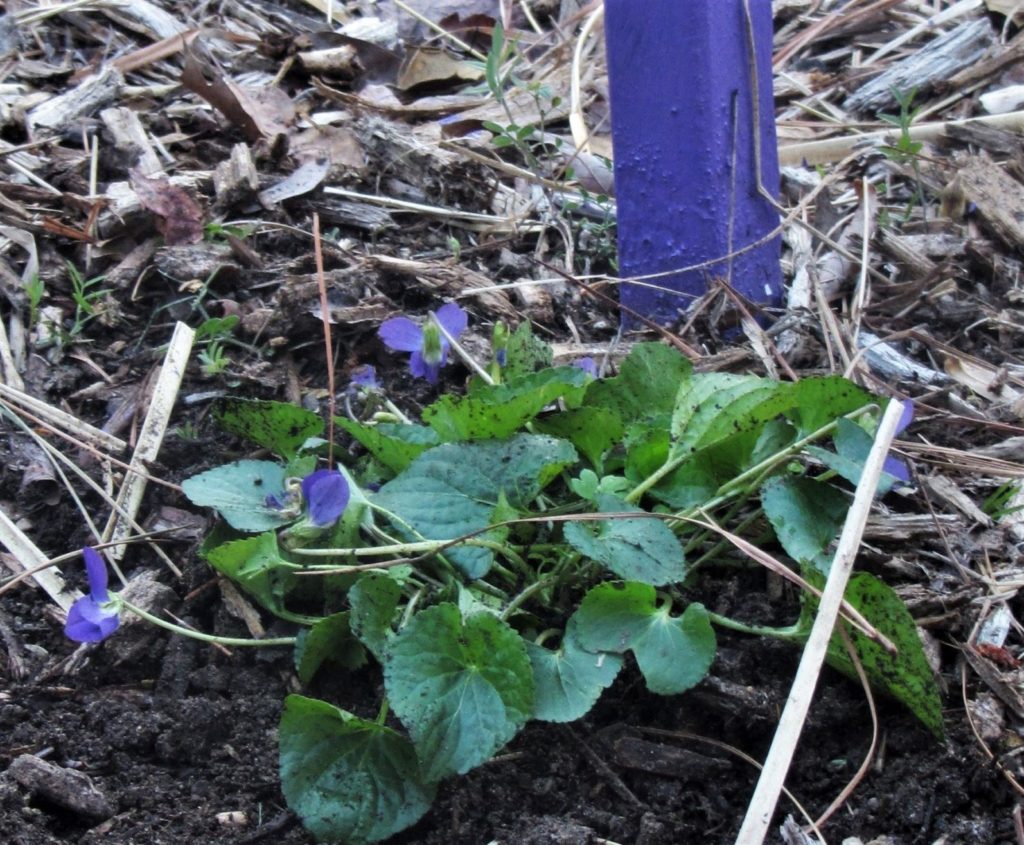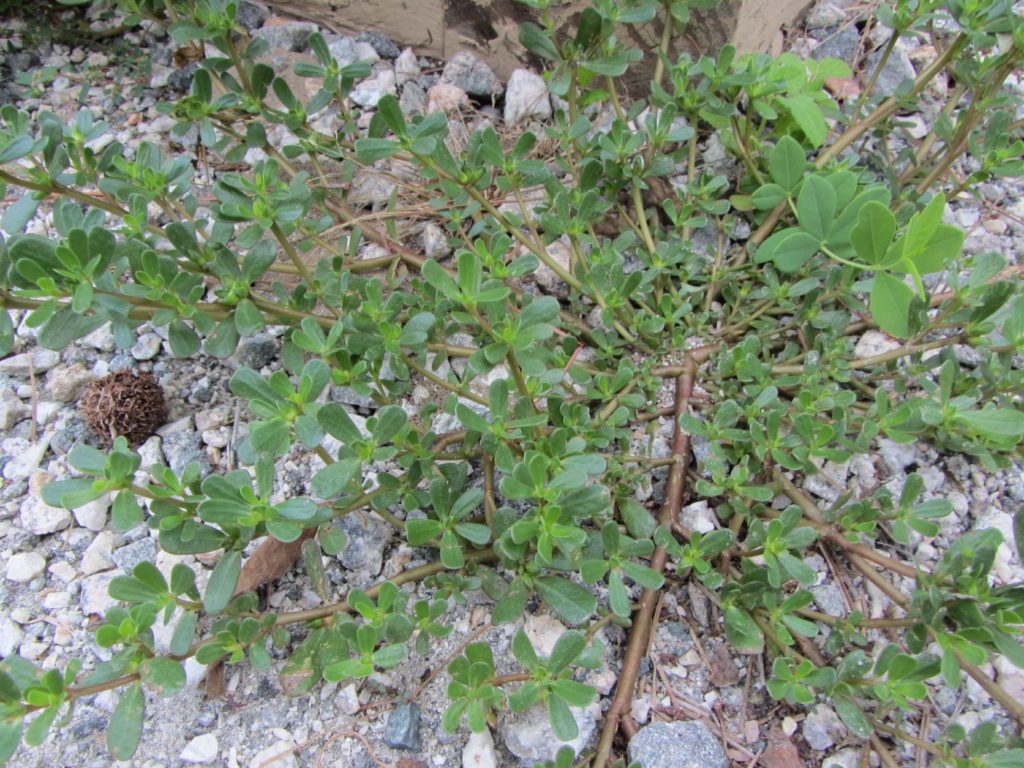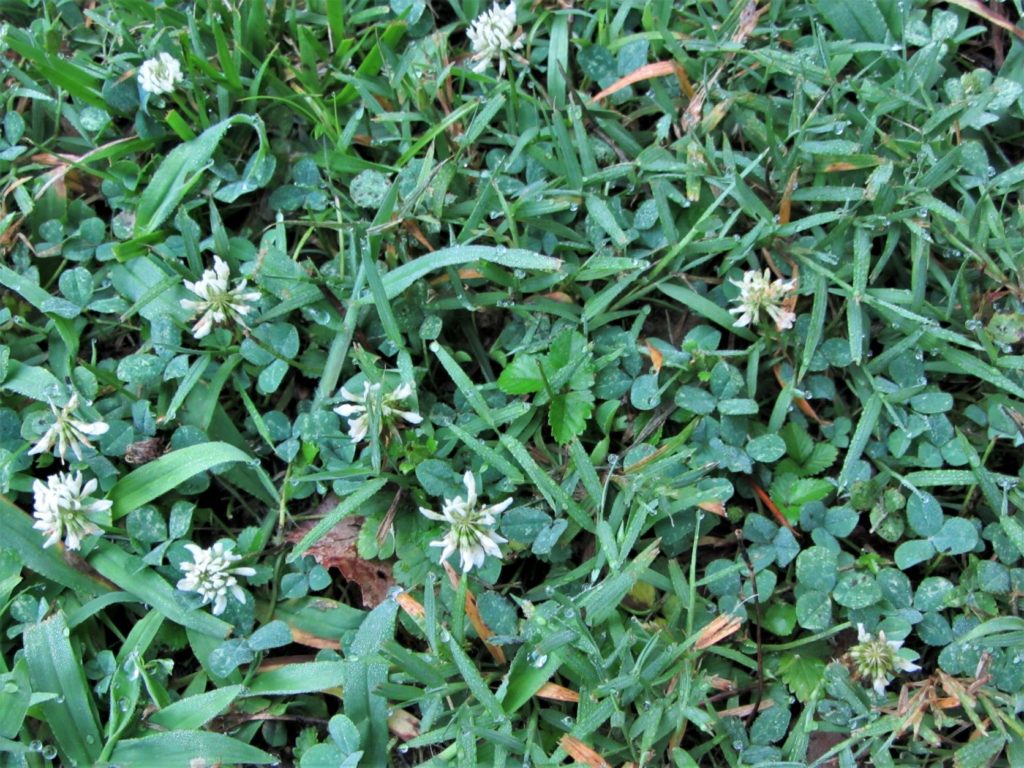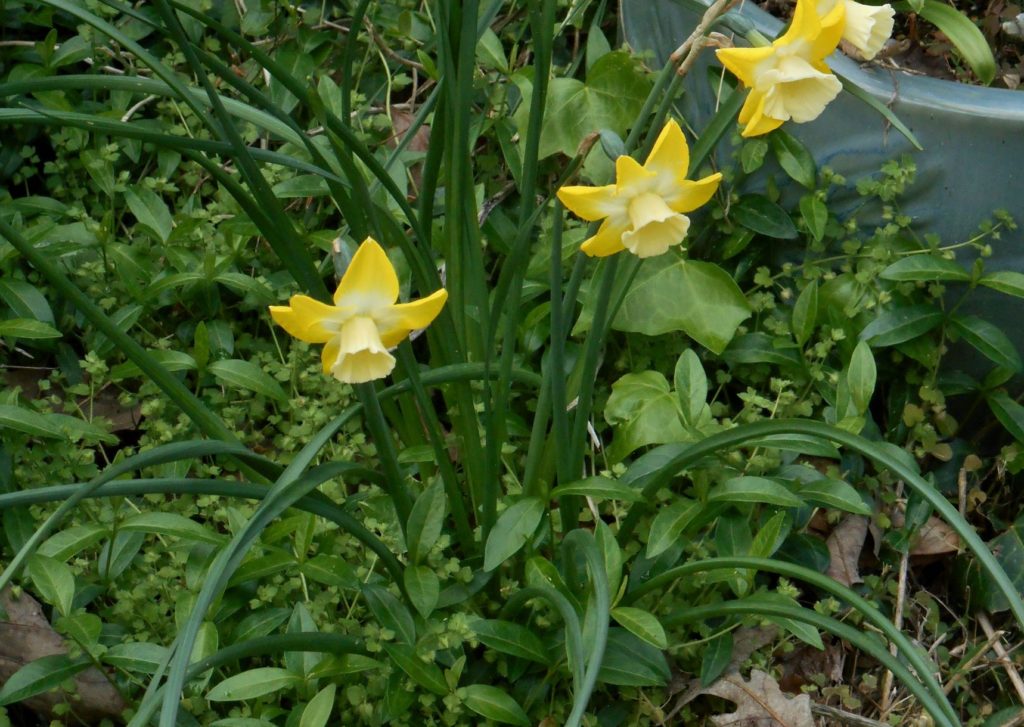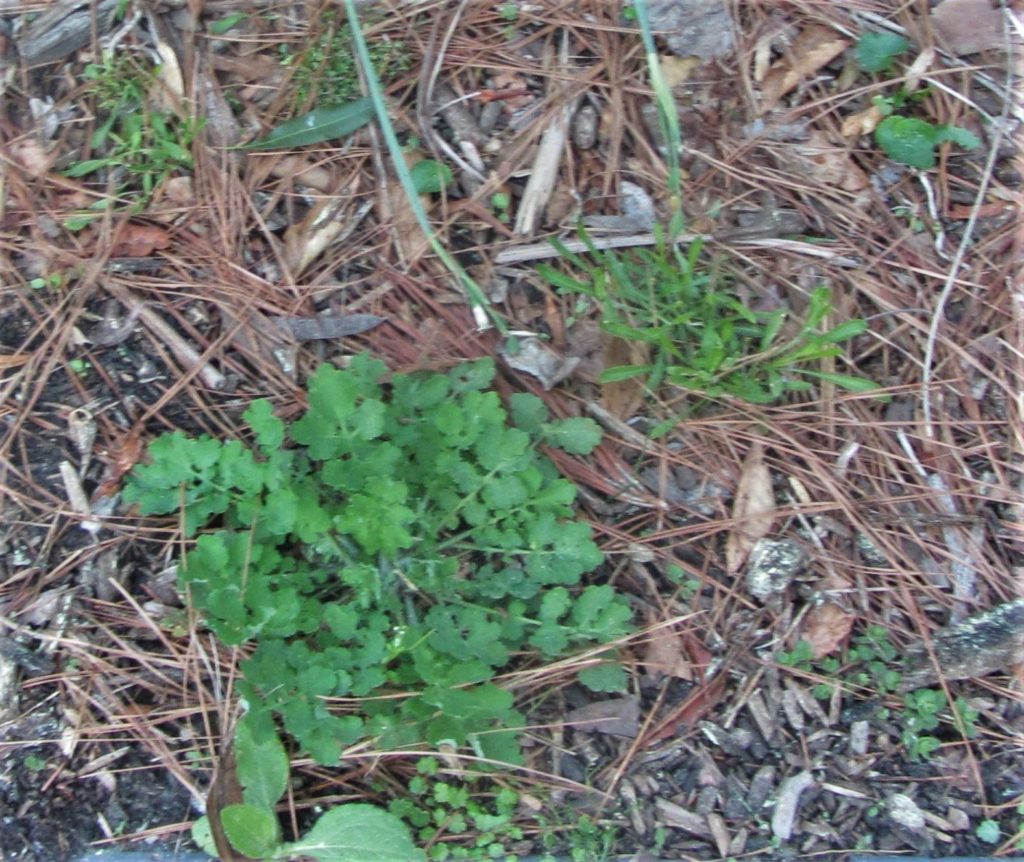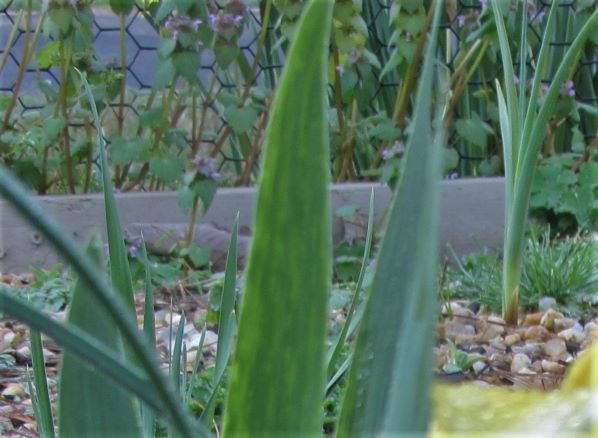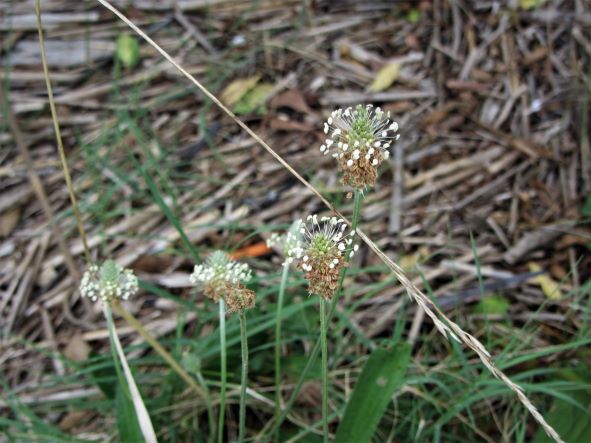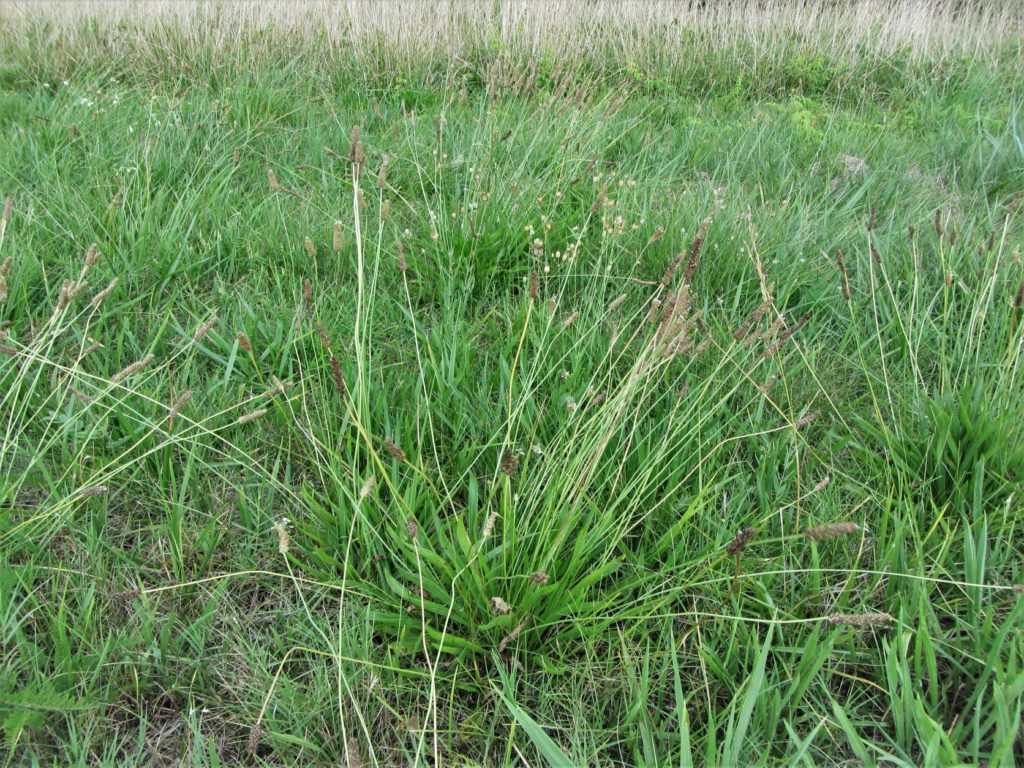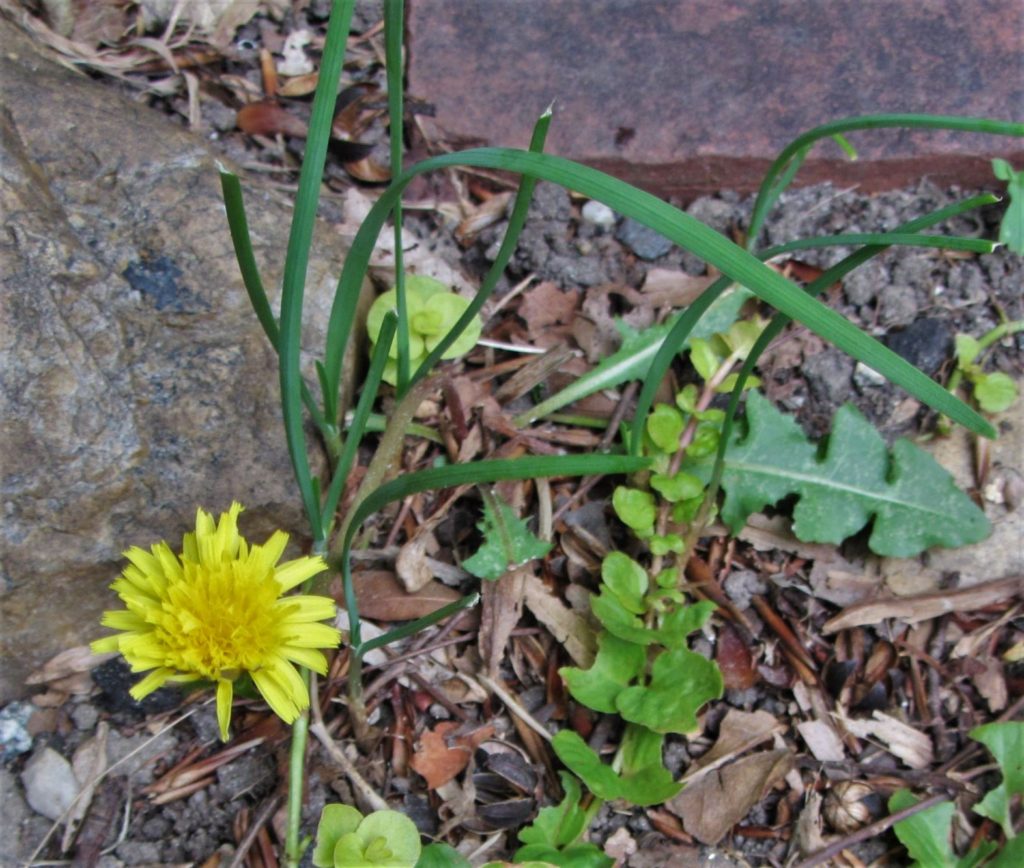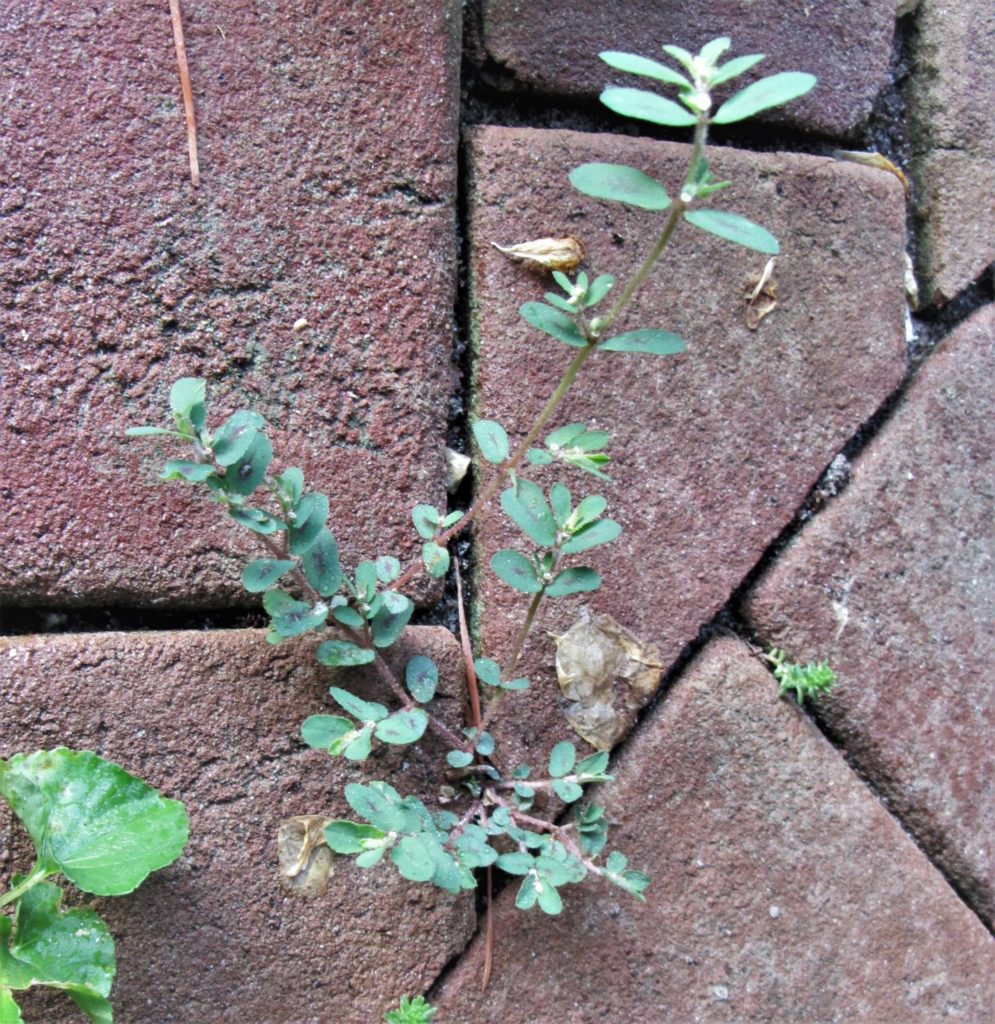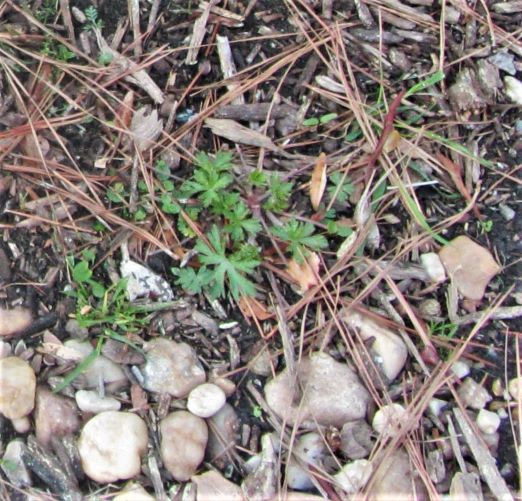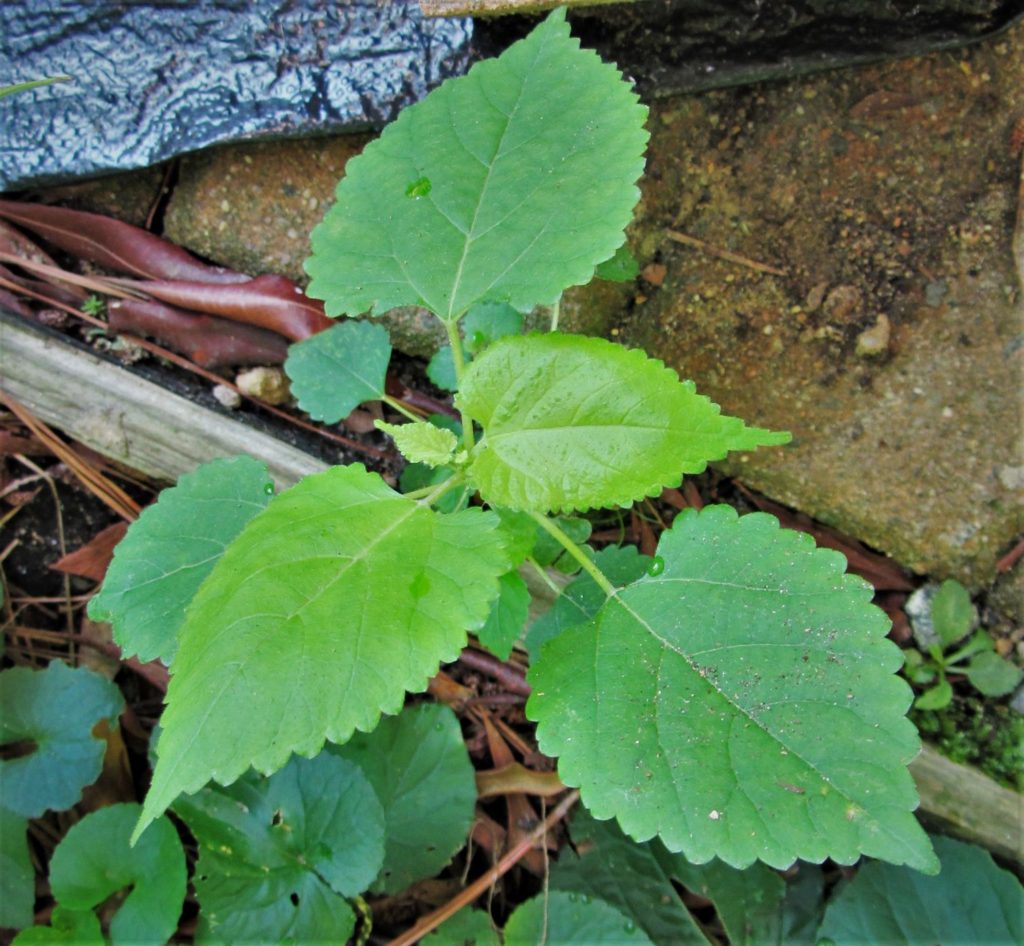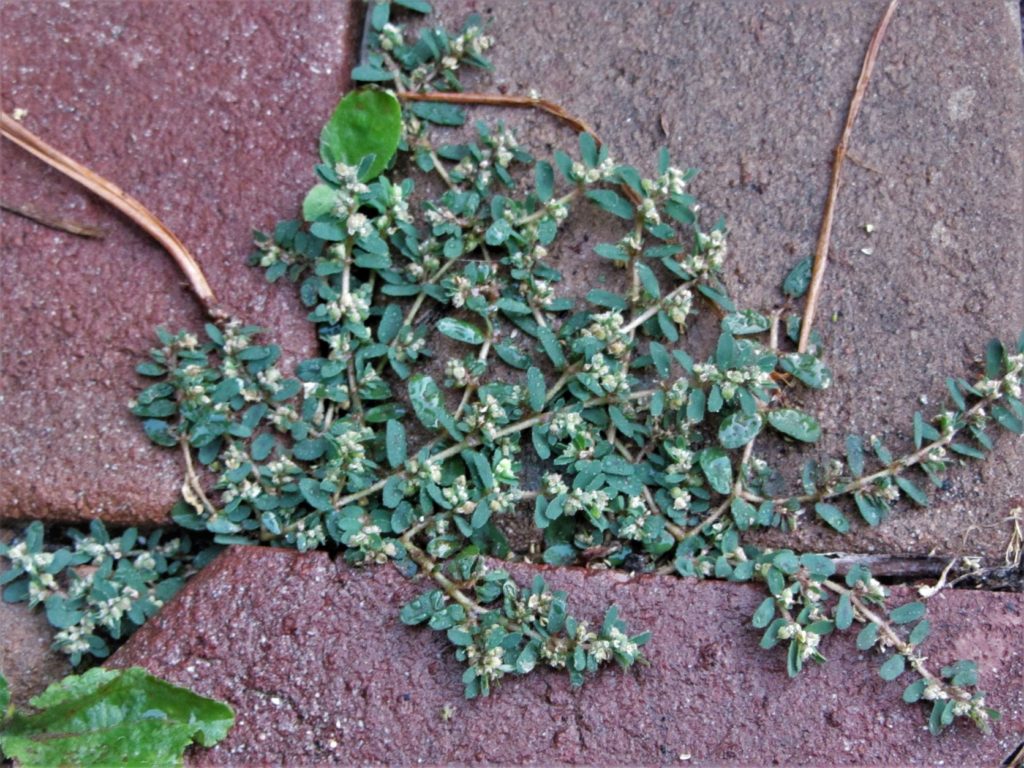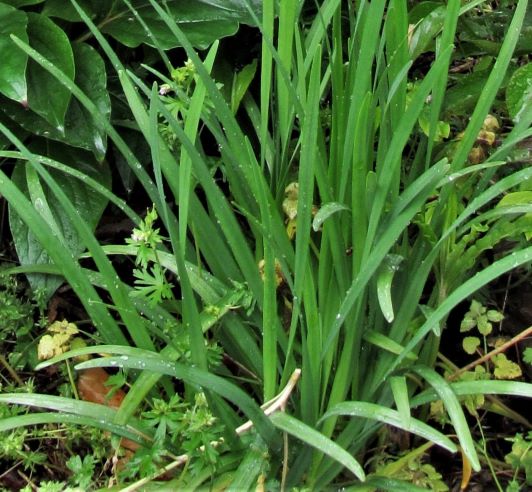What is a Weed?
A family of rabbits gathers each evening at dusk to nibble their way through the clover and creeping Charlie that populate our front ‘lawn.’ They prefer to nibble plants that we don’t cultivate and won’t miss. A motley mix of volunteer species, interspersed with a few grasses, grow in the open space between the patio and hedge. While we call it a ‘bee lawn,’ others might say our lawn is infested with weeds.
What is a Weed?
Any plant growing in the wrong spot may be dismissed as a ‘weed.’ Never mind that it may be useful, edible, medicinal, native, or that it supports wildlife. If a plant is growing out of place, most gardeners will want to eradicate it. Weeds use scarce resources needed for the optimal growth of other plants.
Gardeners spend a lot of time dealing with weeds, knowing that the roots and leaves of these uninvited plants are sucking moisture out of the ground, gobbling up minerals, and perhaps shading or crowding out the neighbors. Whether the weed grows in the lawn or the flowerpot, it demands attention. A gardener might choose to eradicate it, find a use for it, or even grow to appreciate it. It depends on how harmful and invasive the weed may be, and one’s point of view.
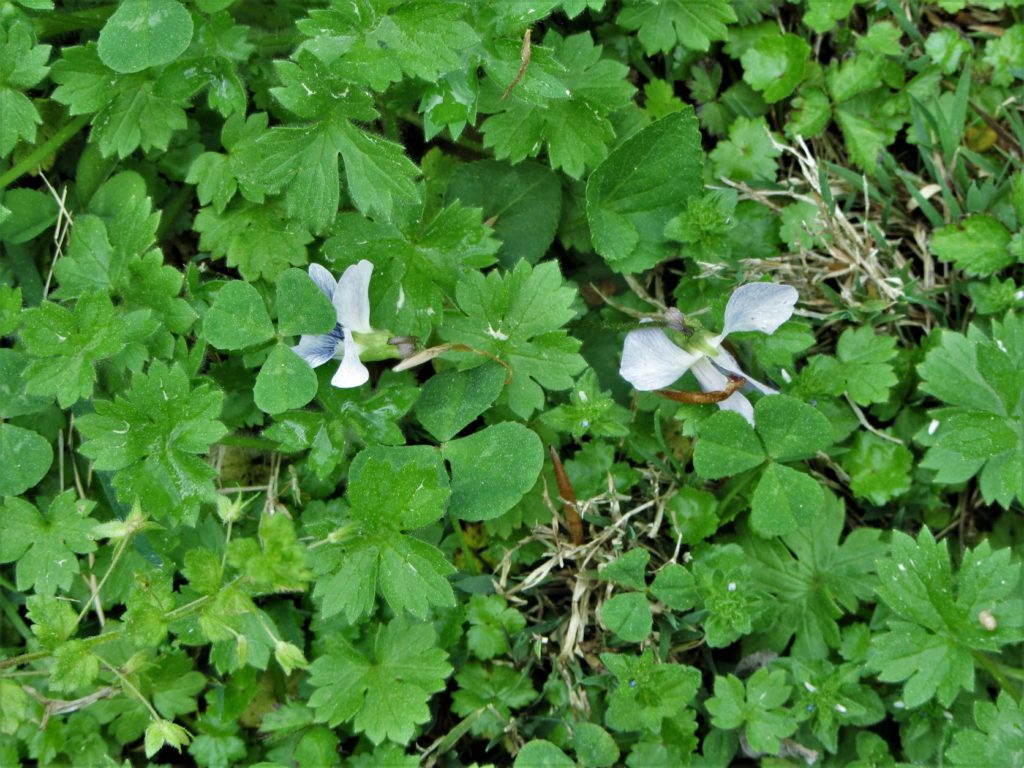
Violets, clover, strawberries, corn speedwell and creeping Charlie compete with a bit of grass in our ‘bee lawn’ in early spring.
Introduced Species
Many plants that we consider weeds were introduced to North America as useful species at some point in the past. Problems arise when we no longer find them useful, and when plants escape cultivation to naturalize. Other weedy plants came uninvited, their seeds hidden in cargo shipments or hitchhiking with other imported plants.
All plants, no matter their provenance, aesthetics, or other qualities, serve a purpose. Their roots hold ground against erosion. They produce oxygen as they filter the air. Flowering plants produce nectar and pollen, and they may later feed birds with their seeds. Of course, the birds become a vector for those seeds to spread further. Seeds that don’t immediately germinate may lie dormant for decades until conditions are right for them to grow.
Most weedy plants out compete other, more desirable plants. Many root easily from any bit of root or stem. They are hardy and persistent, produce large quantities of viable seeds, and have honed survival into an art form. Some grow quickly to soak up every available ray of sunshine from slower growing plants nearby. Others grow exceptionally long roots to draw moisture from the deeper layers of soil.
Maintaining Control
There are few easy ways to permanently remove weeds. Herbicides may seem easiest at the time, but the use of popular ones has been clearly linked to serious health problems like cancer and birth defects, let alone their devastating environmental impacts. A popular alternative, vinegar mixed with salt and a little dish soap, kills the part of a plant it touches, but it isn’t systemic. Vinegar can be very harmful to wildlife, like frogs, worms or skinks, that come in contact with it.
Hand weeding is effective but takes time and effort. We are cautioned that pulling up weeds, roots, and all, may bring other weed seeds to the surface to germinate. Clipping a weed at ground level works for some species, while others regenerate from their roots. Weeds can be smothered by layers of cardboard or newsprint topped with inches of mulch, especially when this is done over winter or in early spring. But mulch also serves as a great place for airborne seeds to take root.
Gardening requires making choices. Our gardens are curated spaces that we cultivate to achieve certain goals. Understanding the ‘volunteers’ that crop up in our gardens helps us recognize which are helpful or harmful to our efforts. We need to know when and how unwanted plants grow so we know how to eliminate them. Following is a brief list of plants, commonly considered weeds, that thrive in our area. It isn’t exhaustive, but may shed new light on plants we often dismiss as weeds.
Edible, Native
Common Blue Violet – Viola sororia Zone 3-7 native to central and eastern North America
Growth habit: Clumping 3”-10” tall from a hardy rhizome. Flowers arise from short, leafless stems.
Usefulness: Violet leaves and flowers are edible. Leaves may be eaten raw or cooked. Leaves also have several medicinal uses on traditional herbal medicine. Violets host several lepidoptera species and support numerous species of native bees. A variety of pollinators rely on violets as an early season nectar source. Violets grow into a low, easy to maintain ground cover with highly ornamental flowers.
Notes: Violets grow on many soil types in conditions from full sun to deep shade. There is a white flowered form. Plants are deer resistant and non-invasive.
Edible, Non-native
Common Purslane –Portulaca oleracea Zone 2-11, native around the Mediterranean Sea
Growth habit: Succulent, creeping, roots at leaf nodes. Small yellow five petal flowers become capsules filled with seeds.
Usefulness: Stems, leaves, flowers and seeds are edible and commonly eaten, raw or cooked, around the world. It is highly nutritious and rich in vitamins, and a good food source for wildlife.
Notes: Portulaca grows quickly in full sun in poor soils. It is very drought tolerant and grows a deep taproot. Pieces of leaf or stem root easily. Low severity poisonous, especially when eaten in large quantities.
White Clover –Trifolium repens Zone 3-10 native to Europe
Growth habit: Forms dense mats, roots easily at nodes on horizontally spreading stems and germinates easily from seeds.
Usefulness: Leaves, stems, flowers and seeds are edible raw or cooked, and dried flowers can be used in tea. Improves soil quality by fixing nitrogen on its roots. Frequently used as a cover crop to improve soil and stop erosion, because it fixes nitrogen into the soil on its roots. Supports bees and other pollinators, feeds a variety of wildlife and livestock.
Notes: Clover grows on a variety of soils in full to part sun. Regenerates quickly after mowing. Host to the Clouded Sulphur butterfly.
Common chickweed – Stellaria media Zone 4-11 native to Eurasia and North Africa
Growth habit: A year-round annual, several consecutive crops grow each year in dense creeping mats. Plants live in a variety of conditions from full to partial shade. Prefers moist locations.
Usefulness: Leaves, stems, flowers and seeds are edible and may be eaten raw or lightly cooked. Used in traditional herbal medicine, especially for skin conditions. Used to feed poultry, hosts multiple lepidoptera species and supports pollinators and birds.
Notes: White flowers signal the plant is ready to harvest. Commonly found in lawns, garden beds, and other disturbed areas.

Phyllanthus urinaria infests this bed of Lantana, requiring regular attention to remove it before it sets new seeds.
Chamberbitter – Phyllanthus urinaria Annual, native to Asia and Australia, found throughout the Southeastern US
Growth habit: Mounding, spreading. Leaves resemble mimosa leaves and also fold up at night. Inconspicuous flowers, followed by seed capsules, form on the backs of each branch at each leaf.
Usefulness: Has been used in some cultures as a medicinal herb.
Notes: Seedlings germinate through the summer, once the soil warms, and grow into fall. Eradicate the seedlings before they can form seeds to control spread. Inspect purchased plants to remove any seedlings to avoid introducing this persistent weed to the garden.
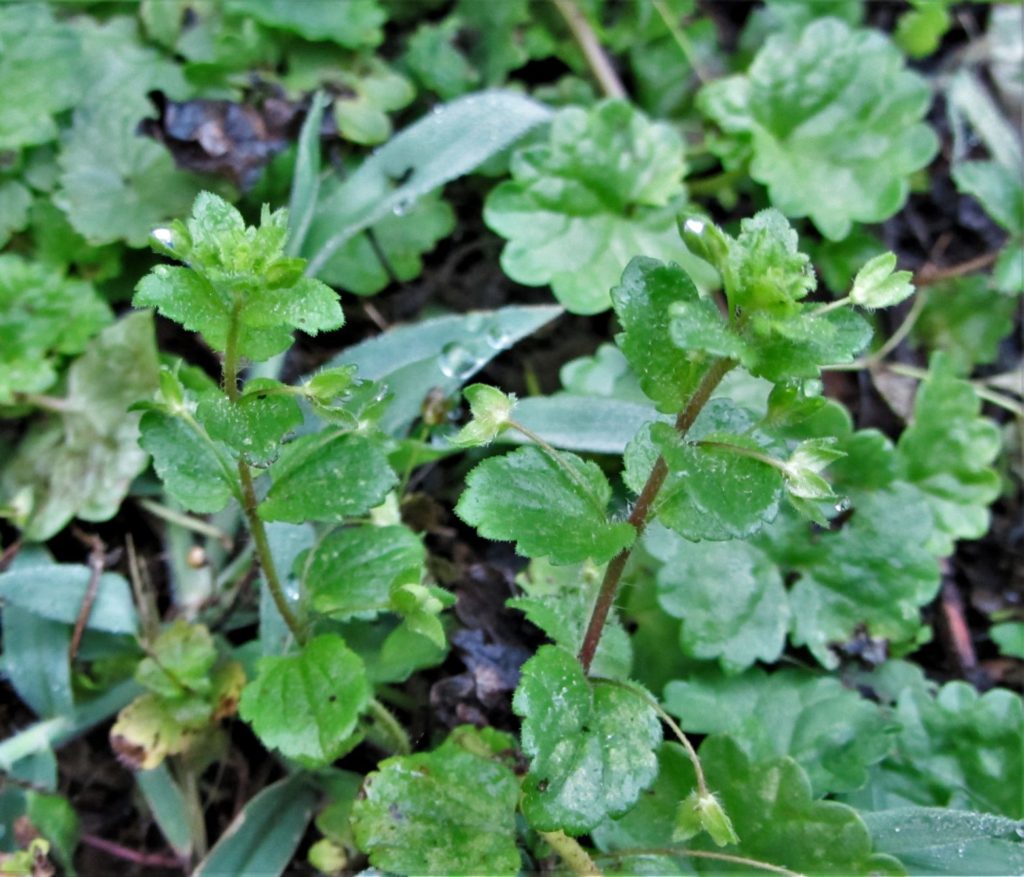
Veronica arvensis may be recognized by its clear blue flowers in late winter and early spring. The buds here haven’t yet bloomed.
Corn Speedwell – Veronica arvensis Cool weather perennial in Zones 6-9 Native to Eurasia, Africa
Growth habit: Rapidly clumping and spreading into mats and colonies, with clear blue flowers.
Usefulness: Used as a medicinal herb, supports pollinators, and serves as a ground cover in disturbed areas.
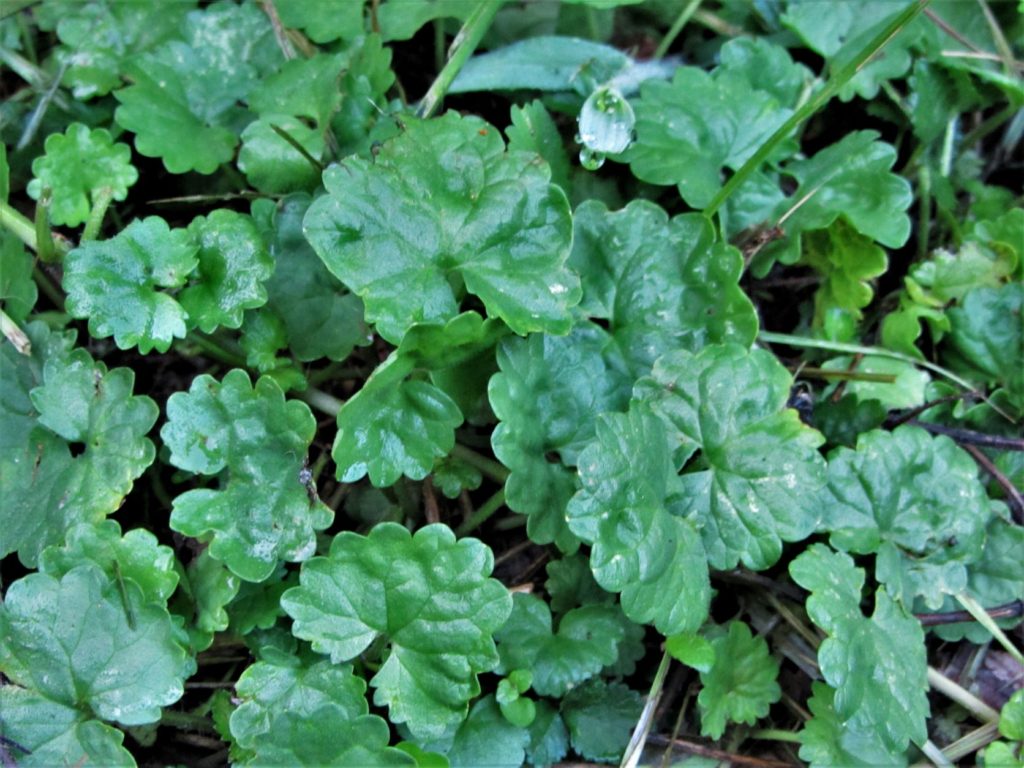
Glechoma hederacea grows very much like ivy, Hedera, species, rapidly making a dense ground cover. It has a lovely purple flower in late spring.
Creeping Charlie, Ground Ivy – Glechoma hederacea Zone 3-10 Eurasia
Growth habit: Broadleaf evergreen creeping, mat forming vine. Blooms purple or blue in spring and early summer. The plant can root at each leaf node and spreads rapidly. May grow as high as 1’.
Usefulness: Used in some cultures as a medicinal plant. A member of the mint family, it rapidly forms a dense ground cover with attractive flowers that support pollinators. It was used in brewing beer before the cultivation of hops.
Notes: Toxic to horses, but edible to humans in tea or a variety of prepared dishes. Prefers shady, moist conditions and may grow dormant in hot weather.
Hairy Bittercress, Lamb’s Cress – Cardamine hirsute Zone 4-8 Native to Eurasia
Growth habit: Mounding rosette 3”-10” with tiny white flowers
Usefulness: Edible leaves are rich in vitamins and minerals, and it may be eaten raw in salads or cooked in various preparations. Flowers support pollinators, and the plant hosts Spring Azure butterflies.
Notes: This plant spreads quickly and may be controlled by pulling clumps as they appear.
Purple Deadnettle – Lamium purpureum Grows as far north as Greenland, native to Eurasia
Growth habit: Grows in short multi-stemmed clumps. Flowers generally purple. This plant can bloom year-round, whenever the weather warms a bit to support growth.
Usefulness: Supports pollinators and is an important food source for bees in early spring. Pollen is red. Leaves, stems and flowers are edible, and are used in herbal medicine, particularly for topical application in salves. This plant is antimicrobial, anti-inflamatory, and contains Vitamin C.
Notes: A member of the mint family, stems are square, leaves are opposite, and flowers resemble those of other mint relatives. They are highly attractive to pollinators. Shallow rooted, this plant is easy to pull, but frequently forms dense mats as stems that fall to the soil will root at the leaf nodes. Often confused with the closely related ‘Henbit.’ Leaves of deadnettle have petioles, while henbit leaves do not. Otherwise, the plants have a very similar appearance.
Henbit, Henbit Deadnettle – Lamium amplexicaule Considered a cool season annual, native to Eurasia
Growth habit: Grows in short, sprawling multi-stemmed clumps on a shallow taproot. Flowers generally purple. This plant can bloom year-round, whenever the weather warms a bit to support growth.
Usefulness: Supports pollinators and is an important food source for bees in early spring. Pollen is red. Visited by hummingbirds, and it is a food source for poultry. Leaves, stems and flowers are edible, and are used in herbal medicine. It is commonly eaten in salads, used cooked in various dishes, and used in teas in parts of Europe and Asia. This plant is antimicrobial, anti-inflammatory, and contains Vitamin C, Iron, and other nutritional benefits.
Notes: Upper leaves emerge from the main stem without a petiole. Leaves farther down a stem may have short petioles. Plants will root at leaf nodes and form dense mats on disturbed ground.
Broadleaf Plantain, Narrow-leaf Plantain – Plantago major and Plantago lanceolata – Zone 3-12 native to Eurasia
Growth habit: A rosette of basal leaves lie low against the ground, and support a spike of tiny, green flowers. Broadleaf plantain leaves are broad and oval, with pronounced veins. Lance-leaf plantain leaves are long and thin, standing more upright.
Usefulness: This edible plant also has a variety medicinal uses. It is anti-microbial and anti- inflammatory. Leaves may be used topically on insect stings and for other skin maladies. Leaves may be used fresh or made into a salve with oil. Tender new leaves may be eaten raw, and older leaves may be cooked like spinach. They are highly nutritious. Seeds can be ground up and used to extend flour and to thicken soups or sauces. Roots both prevent erosion and break up compacted soil. Birds, and other wildlife, eat plantain seeds.
Notes: Native Americans called this plant ‘white man’s footprint’ because plants often appeared in areas near colonial settlements. It is reported to be one of the earliest plants brought to the New World with early New England colonists. Dense fibers in older leaves may be harvested and twisted together to make cord.

Oxalis species may have green, purple or burgundy leaves. Woodsorrels generally have yellow flowers, though some Oxalis species have pink or white flowers. This plant may be confused with clover because of the shape of its loves.
Creeping Woodsorrel – Oxalis corniculata Zone 4-8, native to Eurasia
Growth habit: A low, creeping, mat forming ground cover 2”-8” tall. Stems will root where leaf nodes touch the soil. Leaves are trifoliate, with each leaf section resembling a small heart. Leaves may be green, bronze or purple.
Usefulness: Pollinators visit the small yellow flowers in spring and early summer. This plant may be eaten in small quantities or used to brew tea. Leaves have a lemony twang and are rich in Vitamin C. Leaves have been used medicinally. It has low toxicity in larger quantities and is toxic to many pets and to livestock. Oxalis is an attractive groundcover or addition to a ‘bee lawn.’
Notes: Seeds are forcefully expelled from their capsules as much as 16’ away, when ripe. This plant is known to absorb copper from the soil. Remove plants by hand before seeds form. There are other related species of Oxalis commonly found growing in disturbed areas.
Dandelion – Taraxacum officinale Zone 3-10, native to Eurasia
Growth habit: Clumping 2”-10” tall from a deep taproot. Leaves form a basal rosette 6”-12” across. Flowers arise from leafless stems.
Usefulness: Leaves, stems, flowers, and roots are all edible and highly nutritious. Dried roots may be ground up to brew a coffee alternative that is also used in traditional herbal medicine. Leaves may be used raw or cooked. Flowers may be used in jam and wine, and they are highly attractive to pollinators. Considered a food crop in Europe, early colonists brought the dandelion with them to North America.
Notes: Rapid growth in full sun. Abundant seeds disperse on the wind. Milky sap may irritate the skin. Low toxicity plant.
Not Edible
Spotted Spurge – Euphorbia maculata Annual, native to Eastern North America
Growth habit: Grows rapidly to form dense, spreading maps atop a deep tap root on disturbed soil.
Usefulness: All parts of the plant are poisonous. Milky sap can cause dermatitis on unprotected skin. Sap is under investigation as a potential cancer treatment.
Notes: Germinates rapidly from fresh seeds. Insignificant white flowers each produce large numbers of seeds. Remove this weed when it is spotted before it can re-seed itself. May be confused with the very similar Euphorbia prostrata, or prostrate spurge, which has shorter leaves and no leaf spots.
Carolina Geranium, Wild Geranium – Geranium carolinianum annual or biennial, native to North America
Growth habit: A multi-stemmed, sprawling plant up to 1’ with red stems, palmate leaves and clusters of small, insignificant flowers followed by dark seed capsules. Fibrous roots and a shallow taproot allow this plant to be easily pulled up by hand.
Usefulness: Forage for pollinators, particularly native bees.
Notes: Grows in poor, dry and gravely soils. Also called ‘cranesbill geranium’ for the shape of its seed capsules. Grows through the winter and blooms in early spring in our area.
Mulberry Weed – Fatoua villosa Zone 5-11, considered an annual, native to Asia
Growth habit: Erect and branching to 4’ tall, it resembles a mulberry tree seedling with alternate, triangular toothed leaves. Stems and leaves are hairy. Insignificant flower clusters appear at the base of branches. Seeds ripen within 30 days and are forcefully expelled up to 4’ away.
Usefulness: unknown

Tiny, insignificant flowers develop immediately as the seedling begins to grow. Seeds set quickly and are forcefully expelled, to spread as widely as possible.
Notes: Found in part to full shade on moist soil. First documented in 1964 in Louisiana, this weed has spread rapidly across the country. Pull plants as soon as they are noticed, as seeds ripen within 30 days and are forcefully expelled up to 4’ away. This weed is considered highly invasive.
All photos by Elizabeth McCoy
Elizabeth McCoy is a JCCW Master Gardener Tree Steward and a former Williamsburg Botanical Garden and Freedom Park Arboretum volunteer.
Appreciation to the WBG & FPA, where many of these photos were taken.
Virginia Tech Weed Identification: https://weedid.cals.vt.edu/
Identification of Virginia’s Noxious Weeds https://www.vdacs.virginia.gov/pdf/va_noxious_weeds.pdf

